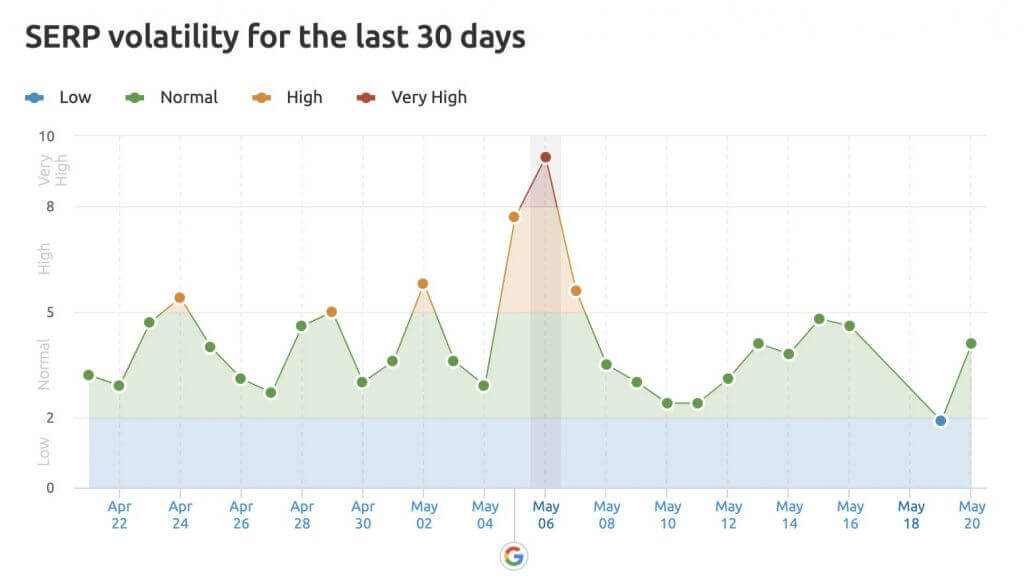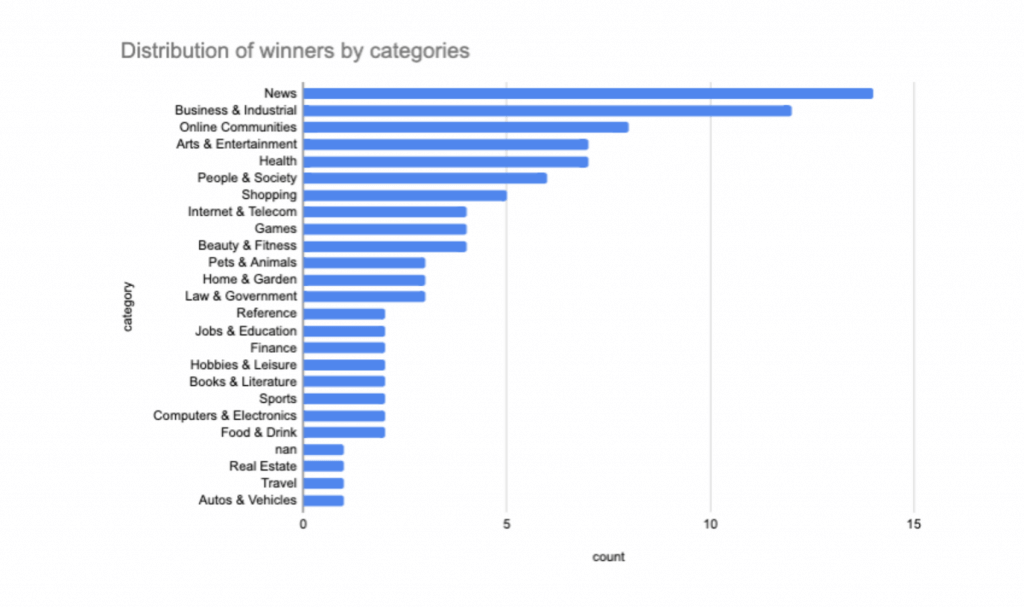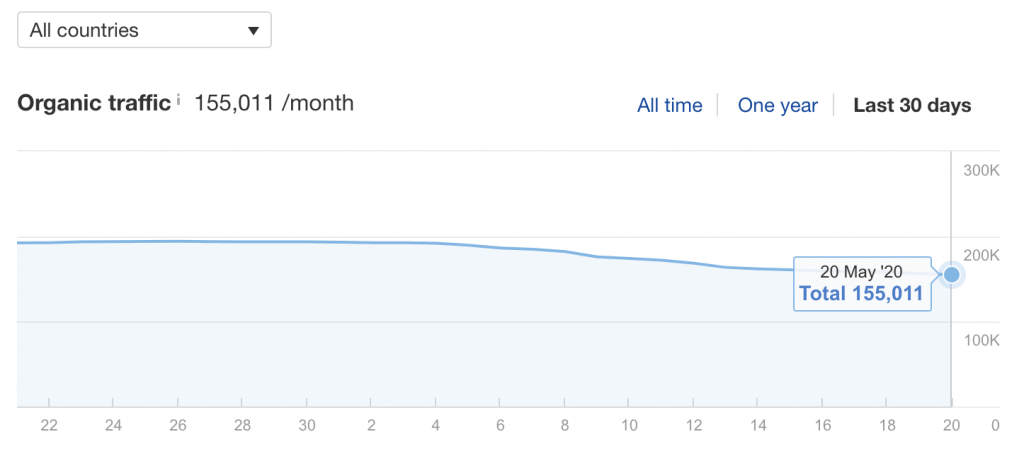Google May Core Update | What Publishers Should Know
You may have noticed that on May 4th, 2020, Google updated its algorithm—an event also known as ‘core update’. Google initiates core algorithm updates several times per year, the previous one being in January 2020.
In this article, we aim to help you understand how the May update has affected publishers.
What has happened to my website traffic?
First of all, if you haven’t heard about this update, take it easy! There is no need to panic. Instead, review your data analytics. Has your organic traffic dropped, remained the same, or shot up after the latest Google update?
If you notice any significant changes, they are most likely related to the core update. Let’s take a look at SEMrush Sensor, which provides insightful data about the SERP (Search Engine Results Pages) results of Google for the last 30 days. If we refer to the line graph below, the line is red for the duration of May 6th, 2020. This means that there has been volatility in the rankings and active movement. The higher the volatility score, the more websites have been affected.

According to SEMrush, “January’s core update only led to average volatility of 8 points, on May 6, almost every category showed peaking volatility rates—from 9 to 9.4 points.”
This means that the latest update has had a greater influence on SERPs than previous ones.
Google states, “In fact, there’s nothing in a core update that targets specific pages or sites. Instead, the changes are about improving how our systems assess content overall. These changes may cause some pages that were previously under-rewarded to do better.”
❗ Remember, with Google updates as such, you are only able to gauge how your traffic and page rankings have been affected after a certain amount of time.
Why have websites experienced a drop in their traffic?
Richard Gingras, VP of News at Google says, “We want to help people find quality journalism—it’s important to informed democracy and helps support a sustainable news industry.”
It appears that this update is aligned with Google’s initiative to support regional publishers. Setupad clients in the regional news category experienced a significant traffic increase from Google Discovery and News channels before this update was in place. Therefore, we can see from the graph below that SERP winners mostly belong to the News category.

*Source: https://www.semrush.com/blog/google-may-2020-core-update/
According to the Search Engine Journal, top categories that have experienced the most changes in SERP results are News, Food, Science and Medical News, Banking and Finance, and more.
We decided to take a look at the ad request change for our publisher in the food category. According to the graph below, in week 19, 2020 (May 4 – May 10) ad requests were only 747,226, while the figure was 1,276,050 during the same period last year. There is a significant difference of 26.14%.
This led us to consider if traffic has dropped along with ad requests. And we were right. By checking Ahrefs results for this publisher, organic traffic in May saw a drop when compared to figures from April.

How can publishers mitigate the impacts of the latest Google Update?
- Run a site audit for your website and fix errors; for example, broken links or images.
- Review and update your content.
- Remove old information from your content.
- Tweak and Improve your SEO.
If you are a news publisher and saw a drop in some of your pages, this is not because your page isn’t relevant or accurate. More likely, it’s because Google perceives other news sites as more credible and accurate.
Final Thoughts
It is possible that your website was not impacted by the latest core update. However, your goal should always be to provide great content and better user experience for your audience, so it’s worth fixing any existing errors on your website.
Neil Patel says, and we couldn’t agree more, “It isn’t about winning on Google. SEO is about providing a better experience than your competition. If that’s your core focus, in the long run, you’ll find that you’ll do better than your competition when it comes to algorithm updates.”



